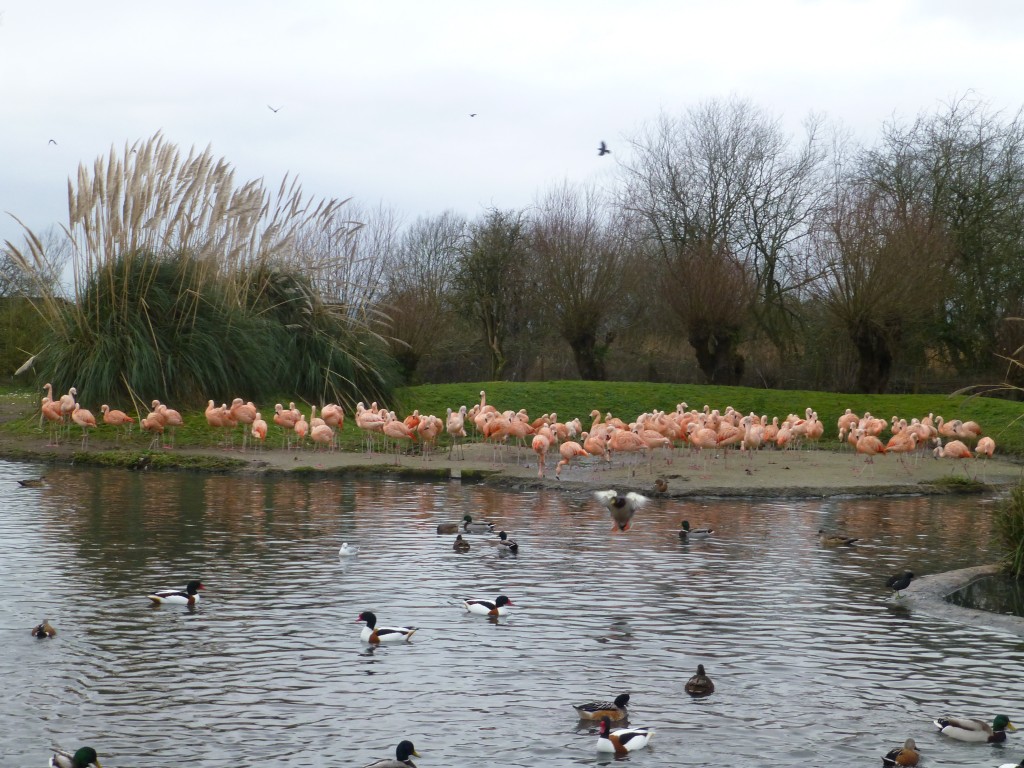A flamingo bedtime.
If you're at WWT Slimbridge in the late afternoon, you might be lucky enough to see the greater flamingos head to bed for the evening. In this colder time of the year, the birds have to be put away for the night in case of ice forming on their pond. The vastness of Flamingo Lagoon means that the avics need some help in ensuring that all of the birds go to bed together, at the same time. But as they have been living there for a few years now, the flamingos know the drill and are quite happy to "follow the leader" into their night quarters.
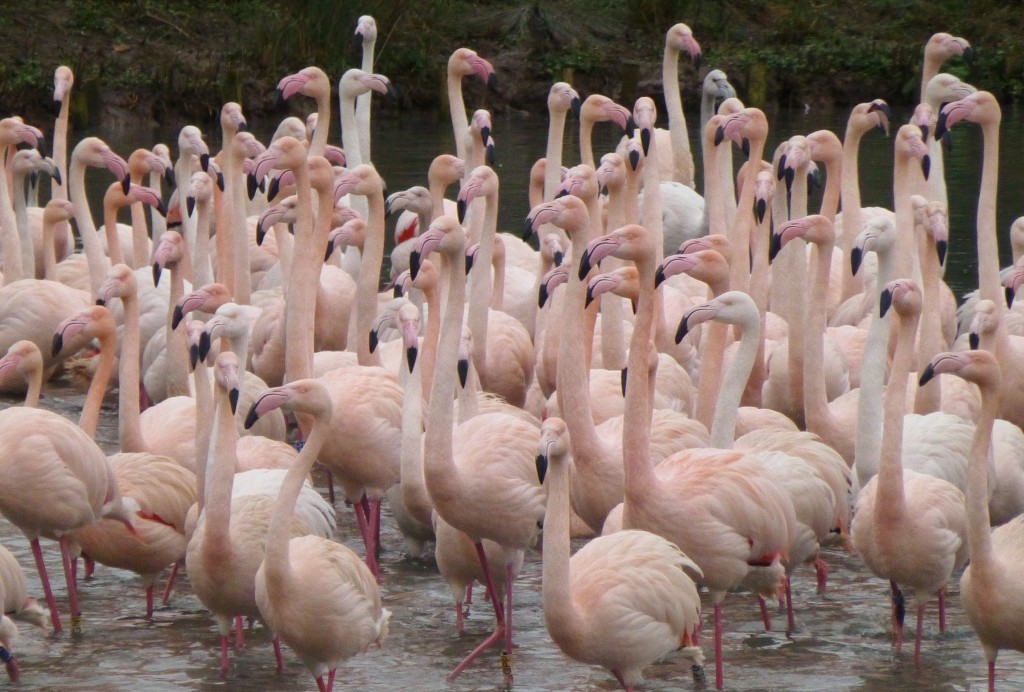
The birds move away from their island and like to congregate in the deeper water near the path (by the Tropical House). I want to say it's because this is the route that Phil and Sparky take around the Grounds, and the birds are waiting for their nightly routine to commence ;-) But that might be a bit fanciful. The photo below shows the movements of the greater flock into this front part of their Pen (it allows for some good photo opportunities too!).
In fact, as you get close to the birds (as in the picture above) you can see the blushes of pink that are developing on heads and necks, and you will be able to spot taller males against shorter females. Parents from the previous summer will still be much paler, close to white, but give them time and they will come back pink!
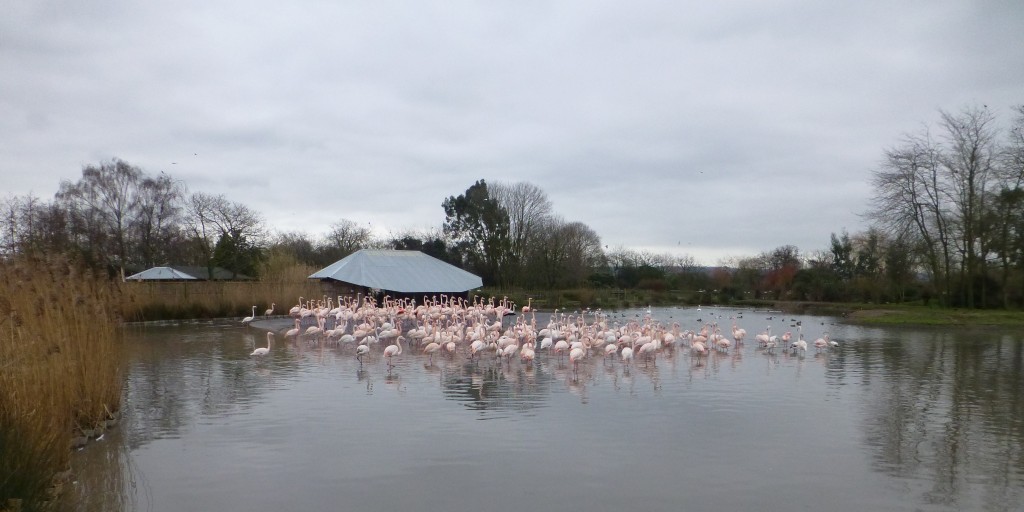
Below is a short video of the birds thinking about heading to bed. You can see them milling around because they know their daily routine. Flamingos, like all animals, are creatures of habit and one of the best ways to keep them happy when held in a collection is to give them a routine and to stick to it. At WWT the avics have a well-honed routine of managing the flamingos each day, and it shows with how contented the birds are.
https://www.youtube.com/watch?v=5FAzLmqcgDM
Some of the other species can be seen inside their houses during the daytime if it's not too nice for them to go out. The lesser flamingos look stunning at the moment and their inside housing allows for close-up views of the birds and their behaviour. I've posted before about the eyes of the lesser flamingo, and how much they can tell you about the birds themselves. The colour of their eyes fascinates me, especially how it changes throughout the year. At this time of year, inside their house, you don't need binoculars to see just how cool this is.
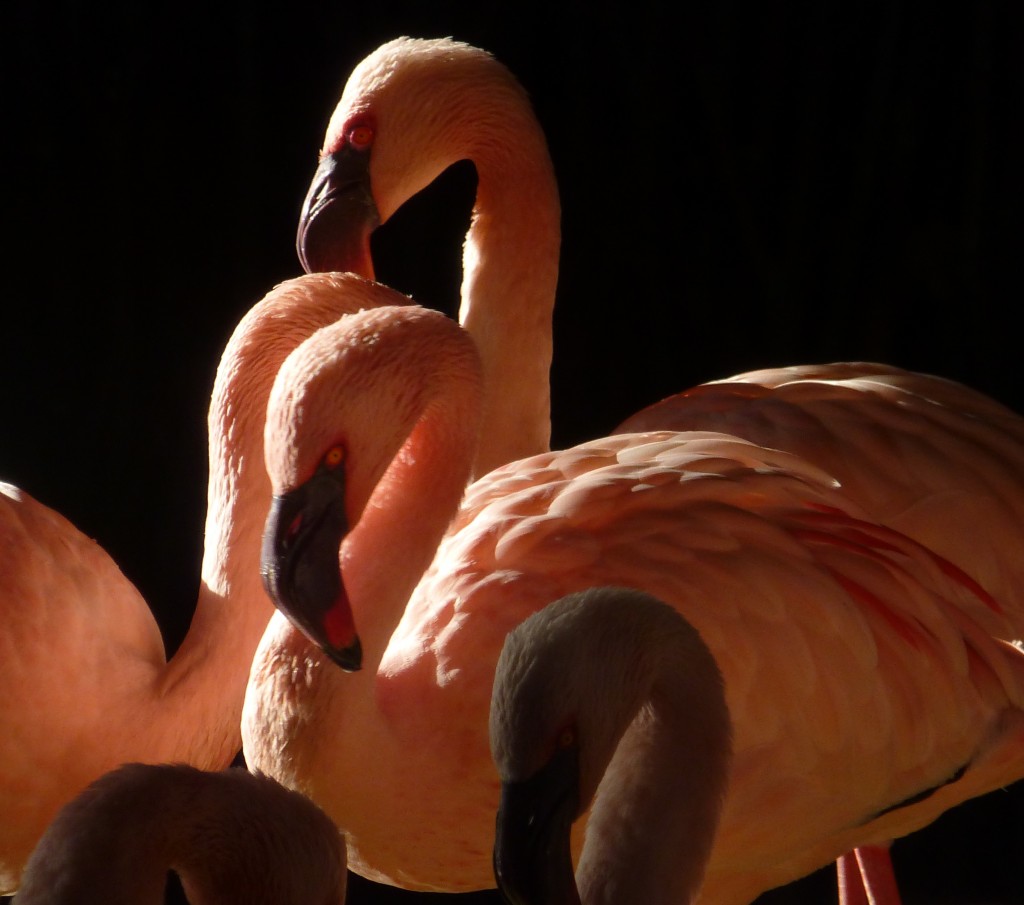
The lesser flamingos have a large, round feeding pool inside their house and if you have the time, spend a while watching the interactions of the birds in and around their feeding area. The avics stimulate them to feed in natural manner by putting their flamingo pellet into shallow water and running a trickle of water through it to encourage the birds to filter feed. Whilst there is plenty of space for the flamingos to eat their fill without argument, there are squabbles between birds and you can see the "pecking order" that is established during feeding time. Some birds get to feed undisturbed, whilst others are always either being shoved around or are doing the shoving! Stay tuned for more on pushy flamingos as I have a research student helping to investigate these behaviours this coming spring and summer...
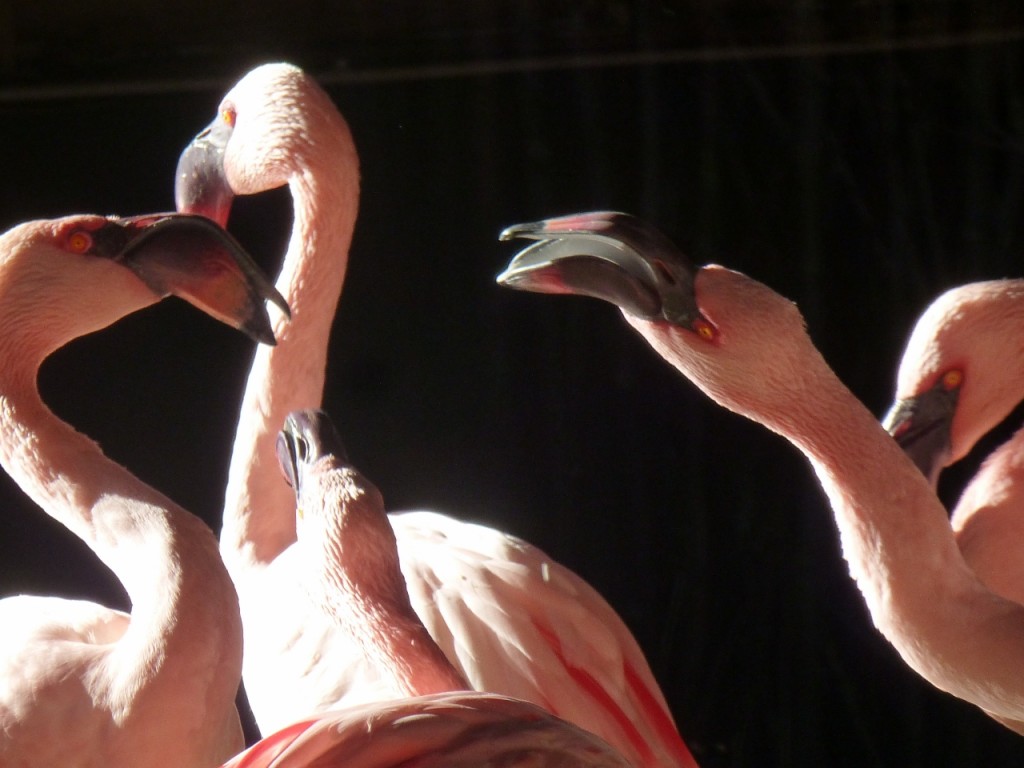
Whilst the tropical flamingos get some extra TLC when it's colder, the hardy species (such as the Chileans) still get to go out and about, braving the elements. The Chileans are also quite set in their ways when it comes to what they do, when they do it, and where they do whatever it is they are doing. I like the photo below as the whole flock is strung out in a line and you can really get a sense for the number of birds that WWT Slimbridge keeps. It can be quite deceptive when you see the flamingos all standing together in one bright pink mass- the flocks can look small. When they spread out they cover a fair distance! Catch the Chileans looking most engaging in the afternoons, when they come and mingle with the ducks at the front of the South American Pen.
